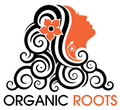Your hair's health and appearance might significantly change depending on the shampoo you use. Finding the right product for your hair type can be difficult with so many alternatives on the market. It's critical to comprehend the unique requirements of your hair, whether it is curly or straight, greasy or dry, and to select a shampoo that will perform for you.
This blog post will outline the steps involved in choosing the greatest hair shampoo, guiding you towards a solution that will leave your locks feeling and looking their best. Therefore, read on to learn how to find the best hair shampoo for your needs if you're sick of experimenting with shampoos that promise the world but give you dull, lifeless hair.
To choose the finest shampoo for our hair type, however, we must first have a thorough awareness of the various hair kinds.
Understanding Your Hair Type
A. Discussion of each hair type's symptoms and signs
Straight hair has little to no volume and is straight and sleek in appearance.
Hair that is wavy has a light wave pattern and a fair degree of volume.
Tight, well defined curls with a lot of volume describe curly hair.
Coily hair is highly dense and has a lot of volume. It has spirals that are tightly wound and frequently shrink a lot.
Hair that is kinked is defined by its tight, corkscrew-like curls that are firmly coiled.
Fine hair might be prone to breaking due to its thin, sensitive nature.
Thick hair is dense and voluminous in texture, making it difficult to style.
Normal hair: has a texture that is balanced, neither too coarse nor too fine.
Oily hair has a greasy appearance as a result of excessive sebum production.
Lack of natural oils causes dry hair to be brittle and dull-looking.
Factors to Consider When Choosing a Shampoo
A. An explanation of the components important for various hair kinds (e.g. moisturizing for dry hair, volumizing for fine hair, etc.)
-
Ingredients that moisturise dry hair:
-
Acid hyaluronic
-
Glycerin
-
Cocoa butter
-
Apricot oil with almond oil
-
Herbal butter
-
a. l. v.
elements that add volume to fine hair
-
protein keratin
-
Panthenol (Vitamin B5)
-
Silica-based polymers
-
table salt
-
Caffeine
-
Ingredients that nourish curly hair:
-
Cocoa butter
-
safflower seed oil
-
Oil of jojoba
-
Avocado lard
-
oil of castor
-
Fruits, herbs, and vegetable extract
Ingredients that moisturise coily hair
-
Almond oil
-
Coconut oil
-
Oil of marula
-
Coconut oil and Shea Butter
-
Horsetail tincture
-
elements that strengthen kinky hair
-
Keratin Collagen
-
Biotin
-
grain protein
-
legume protein
-
Ingredients that balance hair for regular hair:
-
essential oil of lemon
-
essential oil of rosemary
-
Peppermint oil, essential
-
Tea tree oil is used.
-
essential oil of sage
ingredients for thickening hair:
- Henna
- Juice from aloe vera
- extract from beets
- extract of algae
- extract of bamboo
- Nettle essence
- Ingredients for wavy hair that smooth:
- Cocoa butter
- Cherry oil
- Oil of jojoba
- safflower seed oil
- Oil from sunflower seeds
- Ingredients for straight hair that make it shine more:
- B vitamin
- Nutella oil
- Almond oil
- Linnehan's oil
B: Tips for reading product labels and understanding ingredients
- To find the active compounds, look for those that are particular to your hair type. For instance, you should seek for elements like aloe vera, herbal extracts, vitamins, proteins, carrier oils, and essential oils if you have dry hair.
- Avert dangerous chemicals: Avoid substances that can harm your hair and rob it of its natural oils, such as sulfates, parabens, and phthalates.
- Read the whole component list: Pay close attention to the components' order. The majority of the product's ingredients are often found in the first few listed.
- Investigate certain compounds If you come across an ingredient you're not familiar with, quickly research it online to find out more about its features and advantages. We frequently have allergies toIt is therefore better to be aware beforehand of any unique substances. Make sure to read up on fundamental preservatives and surfactants.
- Take into account any particular hair difficulties you may have, such as dandruff, thinning, or colour fading, and search for components that address those problems.
- Consult a specialist: If you're still hesitant, seek personalised advice from a trichologist or hairstylist.
Best Shampoo Options for Different Hair Types
The Nature's Store's aloe vera shampoo is made with all the elements necessary to accommodate all hair types.
One answer works for everyone. It contains organic aloe vera gel, glycerin, onion extract, apricot extract, almond oil, vitamins, keratin, and other ingredients.
It moisturiser without making your hair or scalp greasy.
Different Hair Types Care:
- Dry Hair:
- Use coconut oil or any other mixture oil that contains mustard.
- Do not use hot styling equipment.
- once every week, use a thorough conditioning treatment.
- Use a deep organic conditioner or a leave-in conditioner.
- Avoid using harsh shampoos with sulphate and paraben ingredients.
- Oily Hair:
- Make use of a soft, clarifying shampoo.
- Using cold water, rinsing
- On the ends only, lightly condition your hair.
- Keep heavy oils and products to a minimum
- Dry shampoo can be used to absorb extra oil.
- Use Aloe vera gel, perhaps.
- Curly Hair:
- Make use of a soft, clarifying shampoo.
- Using cold water, rinsing
- On the ends only, lightly condition your hair.
- Keep heavy oils and products to a minimum
- Dry shampoo can be used to absorb extra oil.
- Use Aloe vera gel, perhaps.
- Coily Hair:
- Use a leave-in conditioner on frizzy hair.
- To detangle, use a comb with wide teeth.
- Don't brush your hair when it's dry.




